Radiant Foam:
Real-Time Differentiable Ray Tracing
Shrisudhan Govindarajan*1, Daniel Rebain*2, Kwang Moo Yi2, Andrea Tagliasacchi1,3,4
1Simon Fraser University, 2University of British Columbia, 3University of Toronto, 4Google Deepmind
* denotes equal contribution
International Conference on Computer Vision, 2025 (✨Highlight✨)
Research on differentiable scene representations is consistently moving towards more efficient, real-time models. Recently, this has led to the popularization of splatting methods, which eschew the traditional ray-based rendering of radiance fields in favor of rasterization. This has yielded a significant improvement in rendering speeds due to the efficiency of rasterization algorithms and hardware, but has come at a cost: the approximations that make rasterization efficient also make implementation of light transport phenomena like reflection and refraction much more difficult. We propose a novel scene representation which avoids these approximations, but keeps the efficiency and reconstruction quality of splatting by leveraging a decades-old efficient volumetric mesh ray tracing algorithm which has been largely overlooked in recent computer vision research. The resulting model, which we name Radiant Foam, achieves rendering speed and quality comparable to Gaussian Splatting, without the constraints of rasterization. Unlike ray traced Gaussian models that use hardware ray tracing acceleration, our method requires no special hardware or APIs beyond the standard features of a programmable GPU.
Our representation is based on the Voronoi diagram (right), which divides space into cells based on proximity to a set of points called sites. The Voronoi diagram is dual to the Delaunay triangulation (center), and by constructing a Delaunay triangulation from a learnable point set, we are able to maintain an adjacency structure that indicates which Voronoi cells are neighbours.
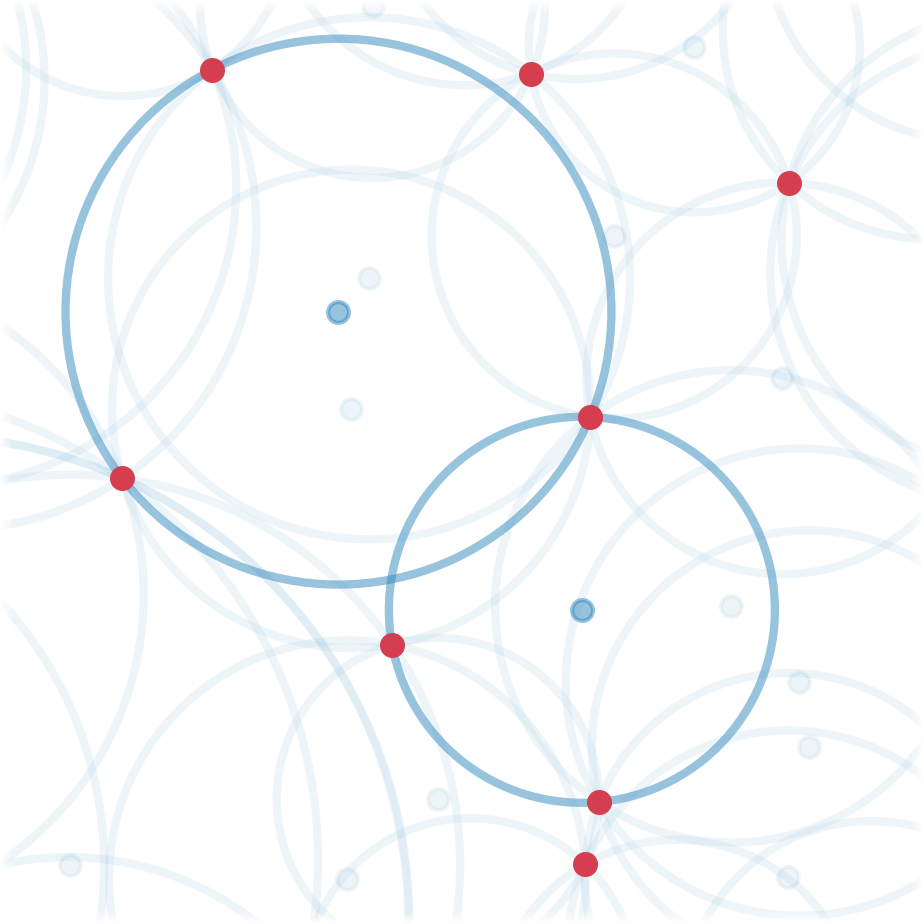
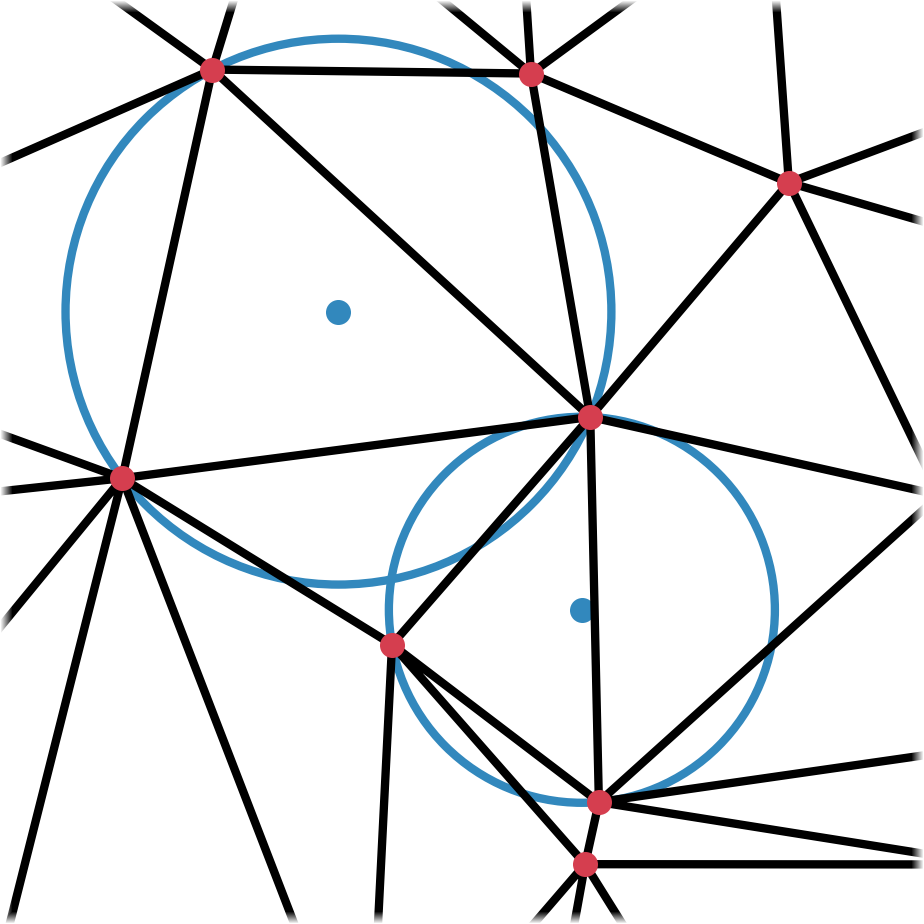
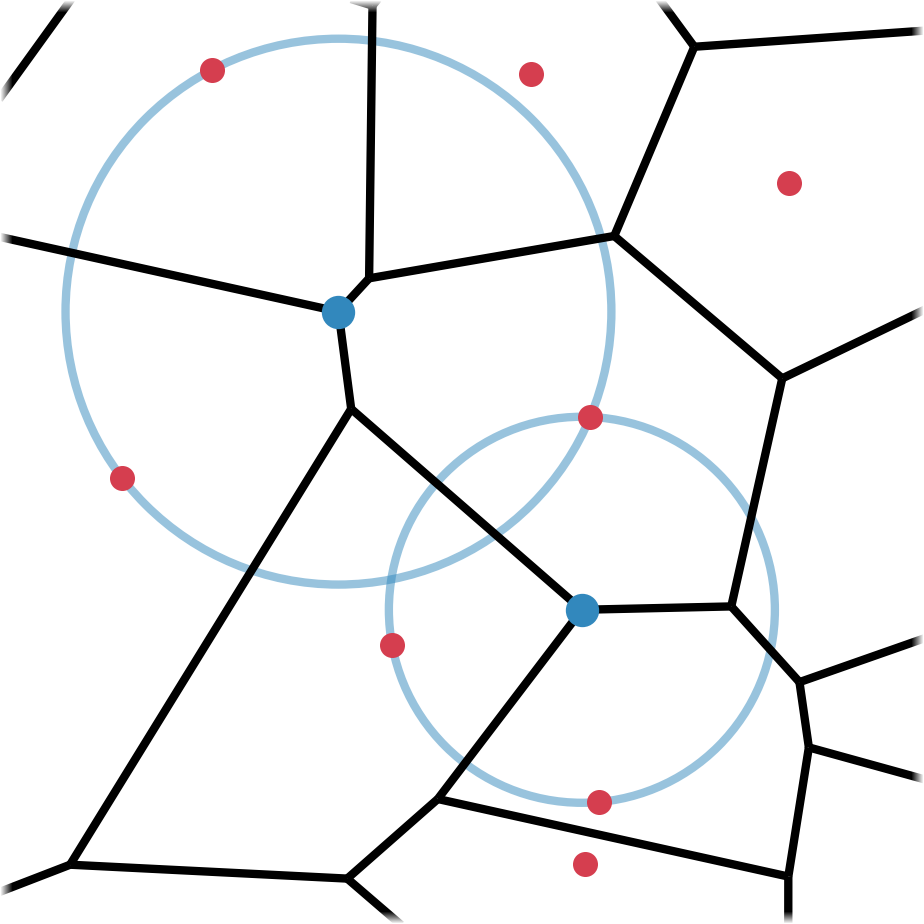
Using this adjacency structure, we can easily compute ray-cell intersections by iterating over the neighbours of each cell and finding the nearest front-facing plane intersection. By performing this process iteratively, we can efficiently trace rays through the foam, stepping from cell to cell. This algorithm is much more efficient than typical ray tracing acceleration methods that rely on hierarchical acceleration structures with logarithmic query complexity.
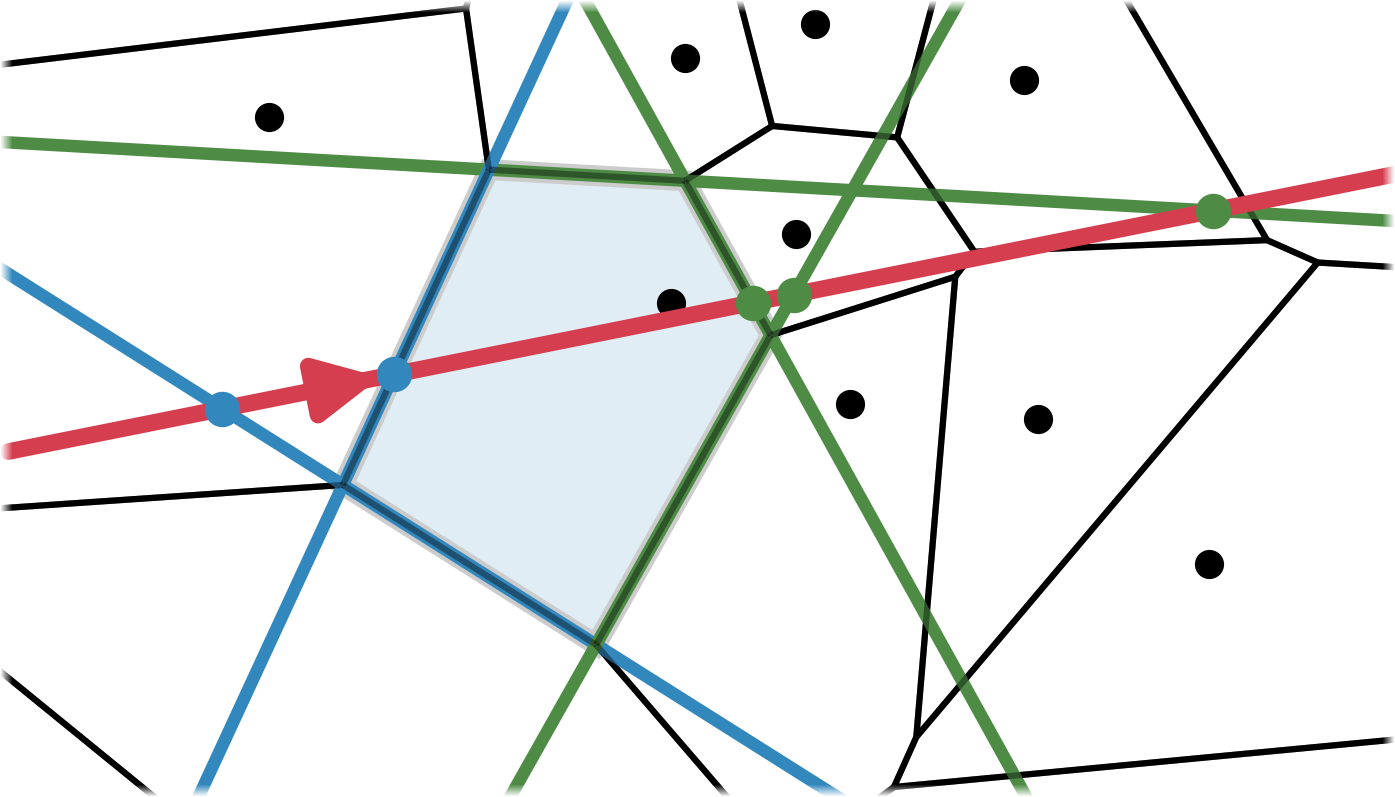
Our method also avoids the challenges typically associated with optimizing a discrete mesh, as the cell boundaries of the Voronoi diagram vary continuously with changes in the positions of sites. This is due to the property of Voronoi diagrams that discrete changes in connectivity are effectively hidden in zero-surface area faces, while other options like using the Delaunay mesh directly would lead to large discontinuities in the field whenever connectivity changes.
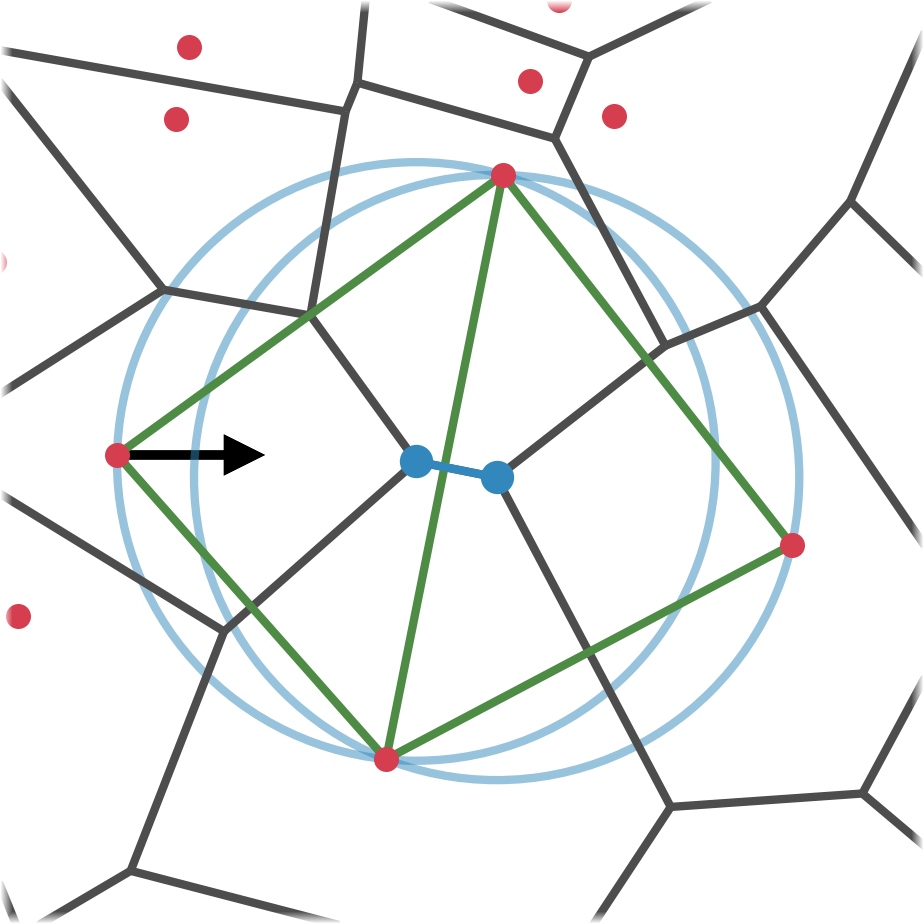
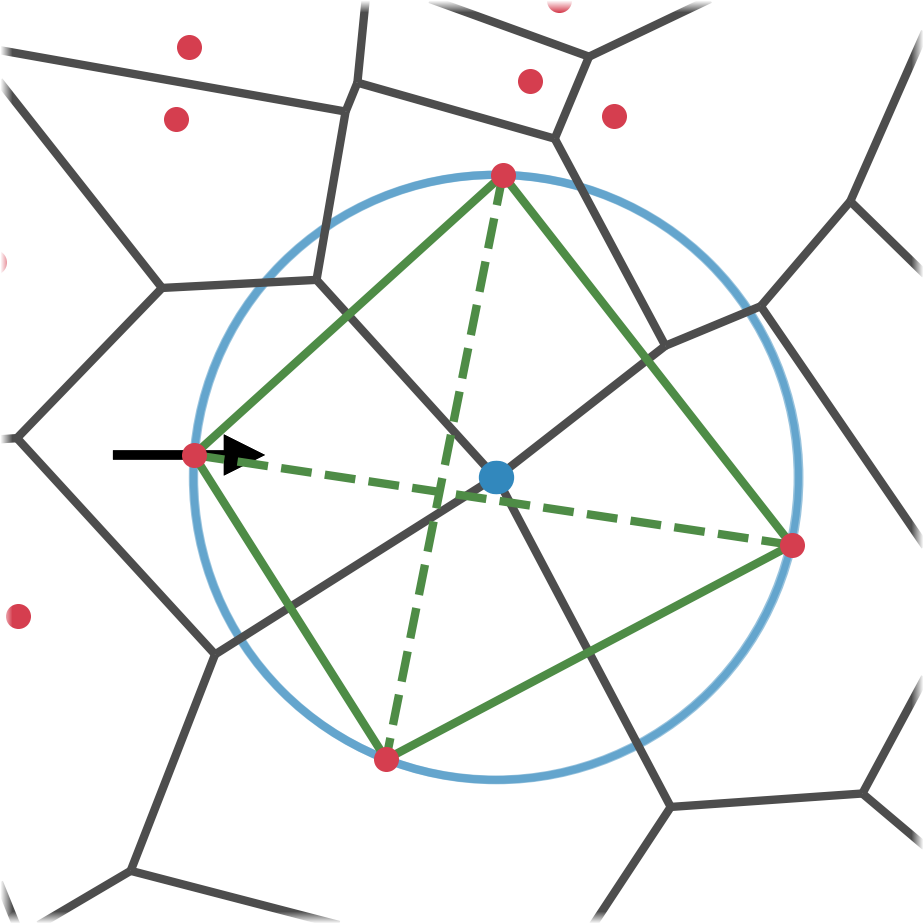
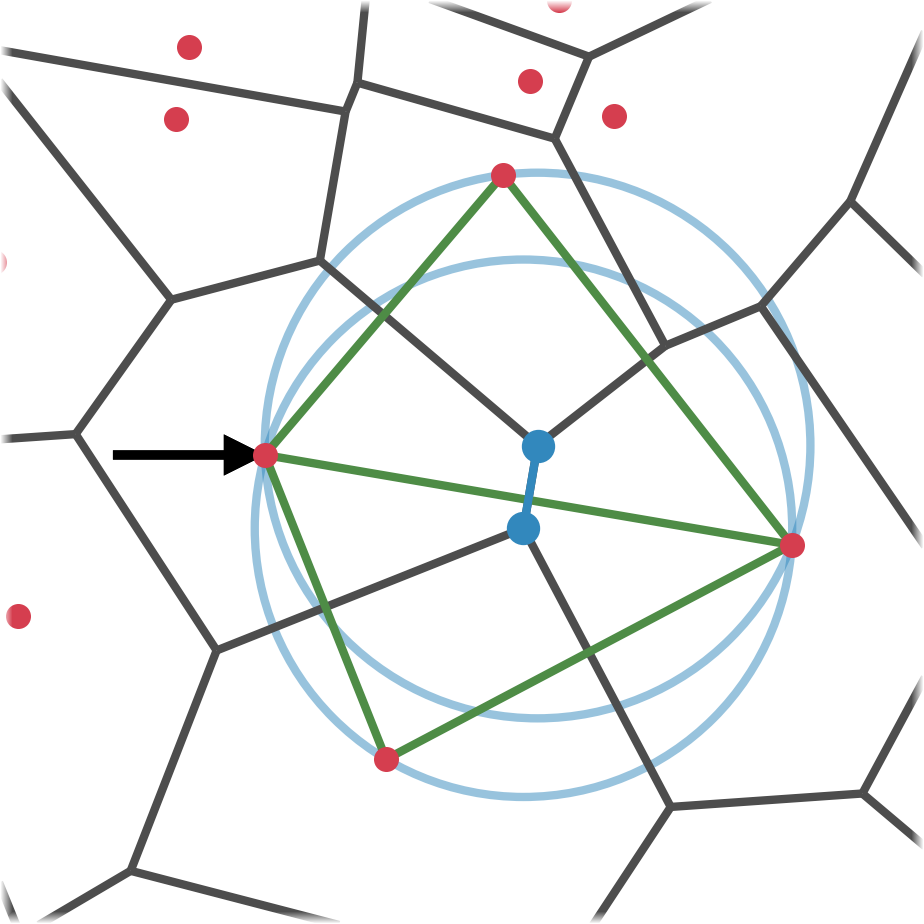
The result is a flexible, differentiable model that can be ray traced in real time at speeds significantly outperforming hardware-accelerated Gaussian ray tracing, while nearly matching the reconstruction quality of Gaussian splatting methods.
BibTeX
@article{govindarajan2025radfoam,
author = {Govindarajan, Shrisudhan and Rebain, Daniel and Yi, Kwang Moo and Tagliasacchi, Andrea},
title = {Radiant Foam: Real-Time Differentiable Ray Tracing},
journal = {arXiv:2502.01157},
year = {2025},
}